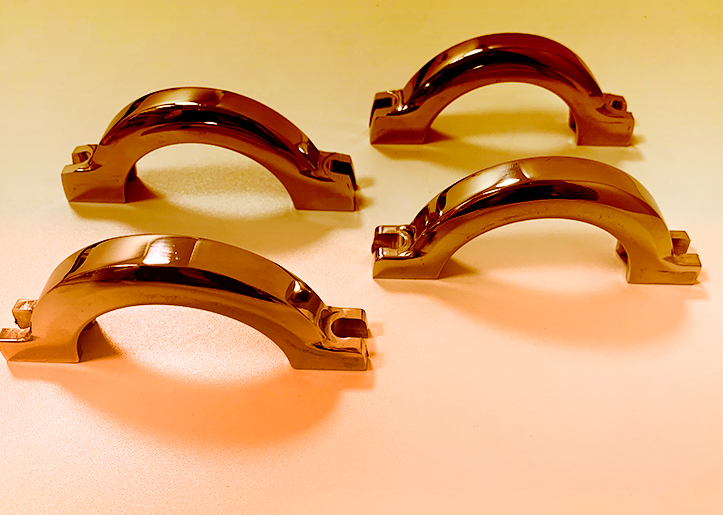Tempering is a heat treatment that is carried out on steel after hardening to achieve…

Metal polishing: process steps | EONSI
Polishing is a process that refines the metal surface of materials and objects by removing possible marks, scratches and welds. Let us explain it in more detail.
Metal polishing: process, types and benefits
What is metal polishing?
Polishing is a process that involves working the surface of a piece with an abrasive material or tool to smooth, shine and remove imperfections or wear that the material’s surface has suffered.
Stages of the metal polishing process
Polishing is divided into four stages, each requiring the use of different tools and materials. However, it may not be necessary to apply all four stages to the same workpiece, as their use depends on the material, the previous condition of the workpiece and whether further treatment is to be applied.
Grating
This is used to remove impurities and traces of rust or dirt that may have remained on the part due to previous processes. It is mainly used on pieces of jewellery that have some kind of coating or plating (gold, silver, lacquer).
Roughing
Roughing (or sanding of metal) consists of removing the defects present in the piece to obtain a smooth surface without imperfections. There are certain parts that cannot be subjected to this process because they cannot withstand the hardness of the sandpaper and go directly to the grinding phase.
Grinding
Also known as honing, this process is necessary to remove the marks left by the sandpaper on the part, remove the remains of swarf, and verify that the part complies with the required dimensions and specifications.
Polishing
This phase removes the marks left by the grinding process on the part and the part is ready to be given the desired finish.
Glossing
The purpose of the last phase is to restore the shine to the surface of the piece and to give it a uniform finish. This process is applied to parts that will not have any subsequent metallic coating. Among the different types of finishes are: glossy, matt (without gloss) and textured.
Types of polishing
Mechanical polishing
This process is carried out with manual or semi-manual tools. Depending on the condition of the part, polishing will start from the most abrasive material to the finest and least aggressive material to treat the part.
Vibratory polishing
Also known as vibratory metal polishing, it is a treatment that was traditionally carried out with water and some type of acid liquid. Nowadays there are machines that carry out the same process dry. This process involves introducing the parts into machines filled with steel, plastic or ceramic balls or cones so that the friction of the parts with these materials polishes them uniformly.
Which metals can be polished?
This process can be applied to any type of metal surface (pure or plated) such as aluminium, gold, copper, brass, stainless steel, among other alloys.
Benefits of metal polishing
Generally, the parts to which this process is applied are designed to have a constant use and for a long period of time, so polishing gives them not only a perfect finish, but also resistance: it prevents corrosion and protects the quality of the part.
Tools required for polishing metals
Tools such as grinding machines, polishers and fixed polishers (with different types of grain), polishing discs, solvents, acids and abrasive compounds are used to degrease, clean, polish and polish the metal. In addition, the main products for metal polishing are pastes or powders that facilitate the treatment of the workpiece. These pastes contain silicon carbide, zirconium or titanium, diamond chips, chromium oxide.
Other types of polishing
Depending on the type of material to be treated, the conditions in which the parts arrive, the final state desired by the customer, or the application or not of a subsequent coating, the polishing process will require different tools and materials to apply it.
Polishing aluminium
Aluminium is a softer metal than steel, so the sandpaper and abrasive materials to be used cannot be the same as for other heavier metals.
Stainless steel polishing
Stainless steel is a harder metal than aluminium, so more powerful and aggressive materials are needed to treat it.
Glass polishing
Glass polishing or grinding is used in industry to dull and decorate glass. The aim is to make the glass less translucent, until you can no longer see through it. It is applied to glass doors and windows.
Metal polishing at EONSI
EONSI, CNC machining experts, advise and manage different important metal treatments, such as polishing, for use in assemblies and mechanical systems. We have the latest technology in this sector. Contact us for free consultation.



